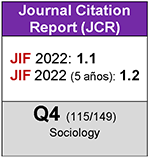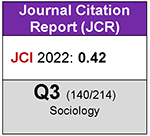La red terrorista del 11M
DOI:
https://doi.org/10.5477/cis/reis.107.155Keywords:
Social Networks, Terrorism, New Organizational Forms, Collective ActionAbstract
The central element that characterizes the new network society is precisely the increasing
relevance of the network (relational systems) as a new organizational form structuring and
articulating collective action. The terrorist attacks of September 11th and March 11th are clearly
examples of this. One of the fundamental difficulties for understanding and dealing with these new
phenomena is precisely their form and dynamics as networks, for which the dominant theoretical
and methodological approaches found in Sociology (based on individual actors and categorical
grouping) are not well suited. In this paper we will analyze the March 11th terrorist network using
the theoretical and methodological approach best suited to the phenomenon: network analysis. This
approach allows us to analyze and visualize its composition and dynamics, the centrality of actors,
and its internal cohesion. For this purpose we use relational matrixes, which contain the
relationships (published by the mass media) among the accused, and specific statistical and
visualization network programs (Ucinet6, Netdraw, Key Player). With this, we aim to demonstrate
the importance and contribution of this new way of analysing social information in order to gain a
better understanding of our social dynamics.
Downloads
Downloads
Published
How to Cite
Issue
Section
License
Copyright (c) 2024 Revista Española de Investigaciones Sociológicas

This work is licensed under a Creative Commons Attribution-ShareAlike 4.0 International License.
Permite Compartir — copiar y redistribuir el material en cualquier medio o formato, Adaptar — remezclar, transformar y construir a partir del material para cualquier propósito, incluso comercialmente.








